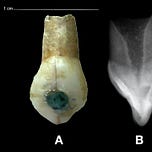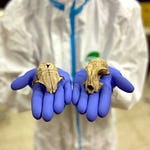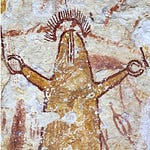Archaeologists have long associated jade-studded teeth with status, beauty, and adulthood in the ancient Maya world. The practice, common among elite men and women during the Classic and Postclassic periods (AD 250–1550), involved drilling cavities into front teeth and inserting small pieces of jade, turquoise, or obsidian. For decades, scholars assumed this form of body modification was exclusive to adults.
A recent study1 challenges that view. Researchers examined three teeth—each inlaid with jade—from children no older than 10 years old. These rare specimens suggest that the cultural logic of Maya dental inlays may have extended beyond personal ornamentation into the social and symbolic realm of childhood.
Listen to this episode with a 7-day free trial
Subscribe to Anthropology.net to listen to this post and get 7 days of free access to the full post archives.










